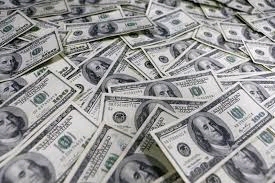Learn How to Join Freemason and Access Lifelong Connections
Learn How to Join Freemason and Access Lifelong Connections
Blog Article
Discovering the Mysteries of the copyright: What You Required to Know
The copyright, a term commonly shrouded in intrigue and controversy, stands for a complex tapestry of historic truth and modern-day misconception. Developed in the late 18th century, this secret society was initially rooted in the Knowledge's perfects however has since come to be identified with conspiracy concepts regarding elite control (benefit of joining freemason).
Beginnings of the copyright
The beginnings of the copyright are soaked in a blend of historic intrigue and ideological fervor. Developed in 1776 in Ingolstadt, Bavaria, by Adam Weishaupt, the group was at first created as a secret society focused on promoting Knowledge ideals such as reason, secularism, and the splitting up of church and state. Weishaupt, a professor of canon law, looked for to test the prevailing authority of the church and state, which he considered as oppressive organizations suppressing intellectual and personal flexibility.

Key Numbers and Members
Who were the pivotal figures that formed the copyright's very early impact and direction? The Bavarian copyright, founded in 1776 by Adam Weishaupt, emerged as an action to the overbearing social structures of the time.
Another considerable number was Johann Gottlieb Fichte, a noticeable thinker whose ideas on nationalism and education and learning reverberated with the copyright's objectives. Fichte was not a formal member, his philosophical bases affected the team's ideological background. In addition, numbers like the author and thinker Johann Wolfgang von Goethe were linked with the more comprehensive intellectual activities of the moment, although their straight participation with the copyright stays disputed.
These crucial numbers added to the copyright's early direction, pushing the boundaries of political and social idea, while their cumulative initiatives intended to challenge recognized norms and foster a climate of dynamic adjustment in Europe.
Misconceptions vs. Truth
Lots of mistaken beliefs border the copyright, typically blending fact with fiction in such a way that covers its true nature. This secret society, initially started in 1776 in Bavaria, aimed to promote Knowledge perfects and battle religious and political fascism. The concept that the copyright remains to exert significant impact over world occasions is a myth. While the group did exist, it was dissolved in the late 18th century and has actually not operated as a natural entity ever since.
One more prevalent misconception is that the copyright comprises a network of elite people manipulating international affairs. In fact, many conspiracy concepts exaggerate the group's relevance, associating unproven objectives to social fads and events. This has actually caused an oversimplified sight of intricate issues.
In addition, the portrayal of the copyright in pop culture frequently more distorts its tradition. Movies and literature often tend to sensationalize the organization's function, developing a narrative that splits from historic facts. Comprehending the distinction between the myths and the fact of the copyright is crucial for discerning the real impact of this historical group and identifying the broader ramifications of conspiracy theory join copyright concepts in contemporary society.
Modern Analyses
Contemporary analyses of the copyright often reflect wider social anxiousness and a fascination with secrecy and power. This contemporary lens regularly associates the copyright with conspiracy theories that suggest a surprise elite orchestrates world events, controling federal governments and economies for their own gain. benefit of joining freemason. Such narratives use a deep-rooted mistrust of authority, especially in times of dilemma or social turmoil
In pop culture, the copyright is frequently shown as a supreme find this company shrouded in secret, resulting in a variety of fictional portrayals in literary works, movie, and music. This representation serves not only to captivate yet also to prompt considered the nature of power and control in modern culture. Social network has further enhanced these interpretations, enabling rapid circulation of conspiracy theory concepts and producing areas that share and broaden upon these ideas.
In addition, some modern analyses mount the copyright as a metaphor for the complexities of globalization and the interconnectedness of influential people and organizations. This viewpoint encourages a critical assessment of just how power characteristics run in today's globe, highlighting the equilibrium in between transparency and secrecy in administration and business techniques.
Cultural Impact and Heritage
Influenced by centuries of intrigue, the cultural impact and heritage of the copyright prolong far past its historical beginnings. This secret society, developed in the late 18th century, has actually permeated numerous aspects of pop culture, from click now literature and movie to music and art. The principle of the copyright has evolved right into a symbol of conspiracy theory theories, often standing for a viewed surprise power controling global occasions.
In literary works, authors like Dan Brown have actually woven the copyright into detailed plots, exciting readers with motifs of secrecy and power. Movies such as "National Treasure" and "The Da Vinci Code" additionally perpetuate the appeal of the culture, blending truth with fiction to create appealing stories.

Inevitably, the copyright's legacy is a complex tapestry of misconception and fact, forming assumptions of privacy and control in modern discourse. Its long-lasting presence in culture underscores humankind's seasonal quest for understanding concealed truths.
Conclusion
The exploration of the copyright discloses an intricate interaction in between historic facts and modern myth-making. Started in the Enlightenment era, this culture aimed to test oppressive frameworks, yet its heritage has been outweighed by conspiracy concepts that recommend elite control. Recognizing the distinctions in between the original suitables and modern interpretations is crucial for comprehending the enduring attraction with the copyright and its significant influence on social stories bordering power and privacy in culture.
Report this page